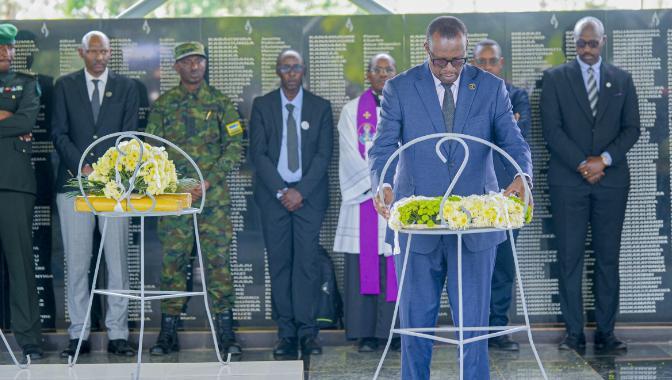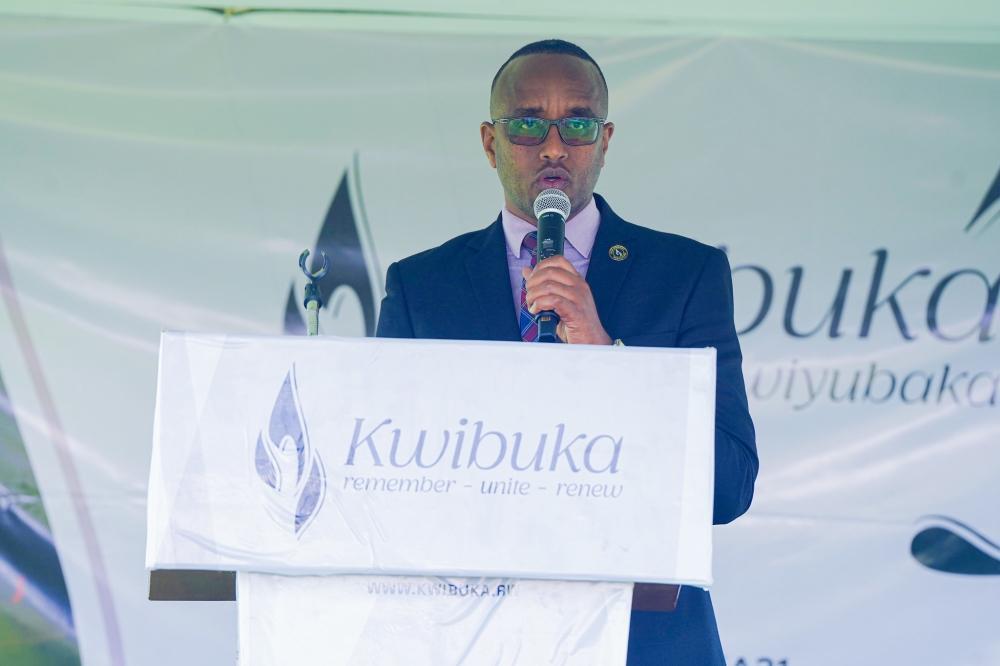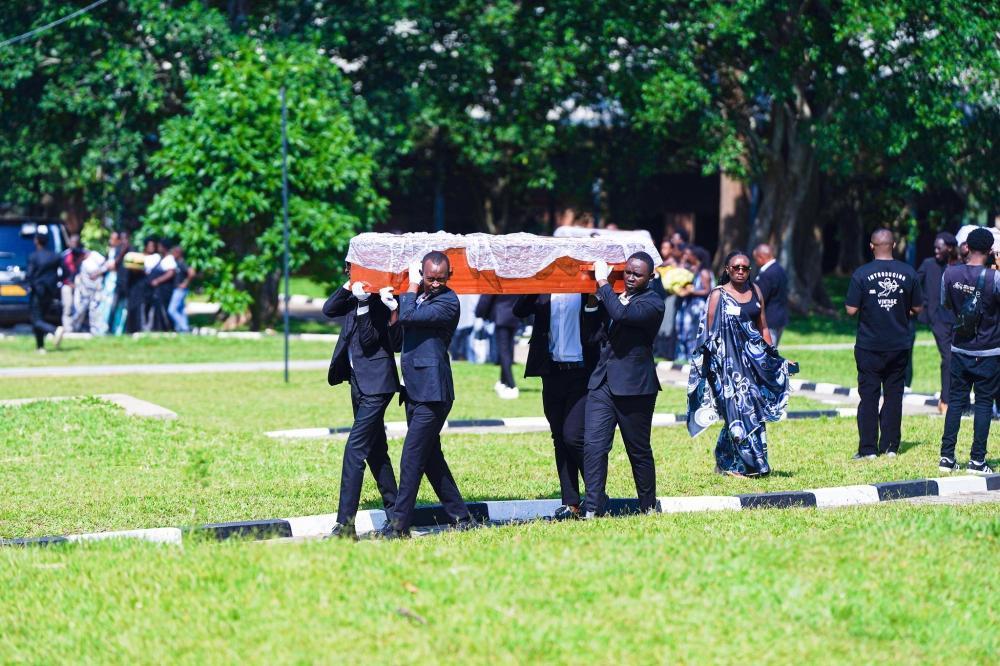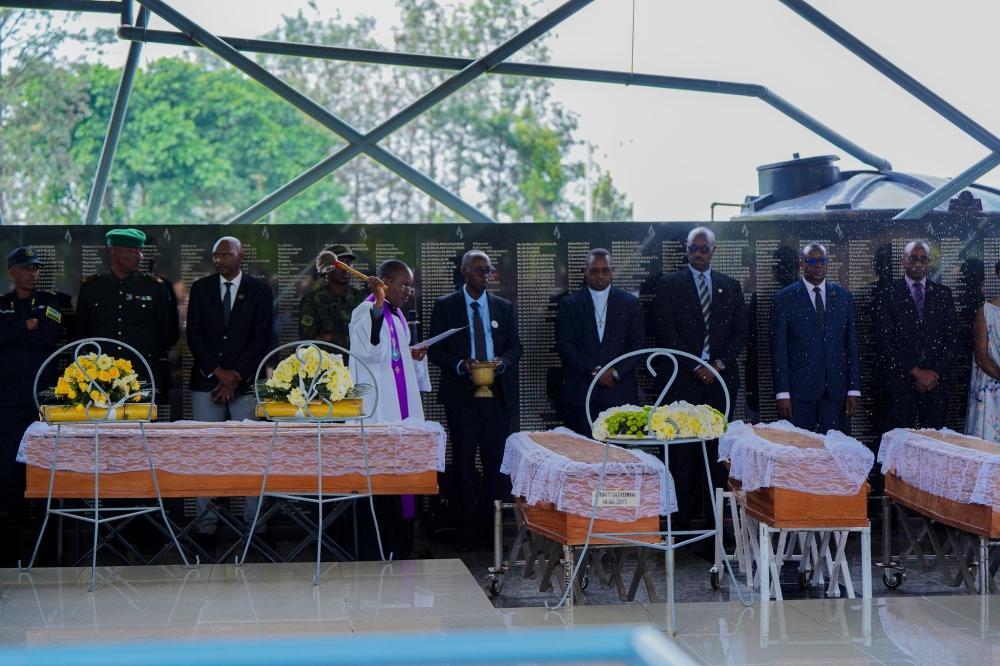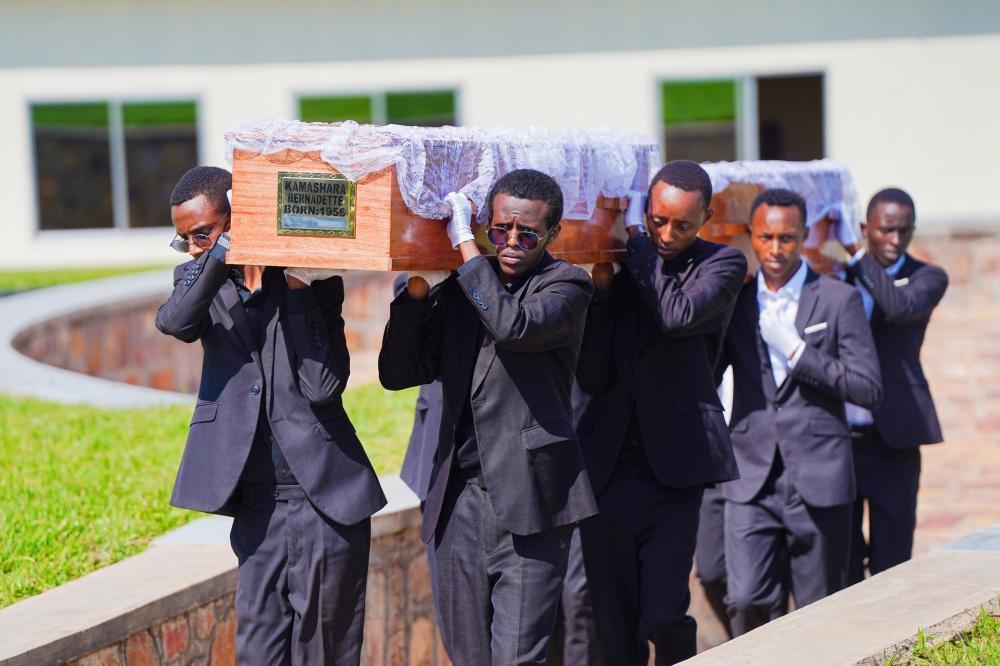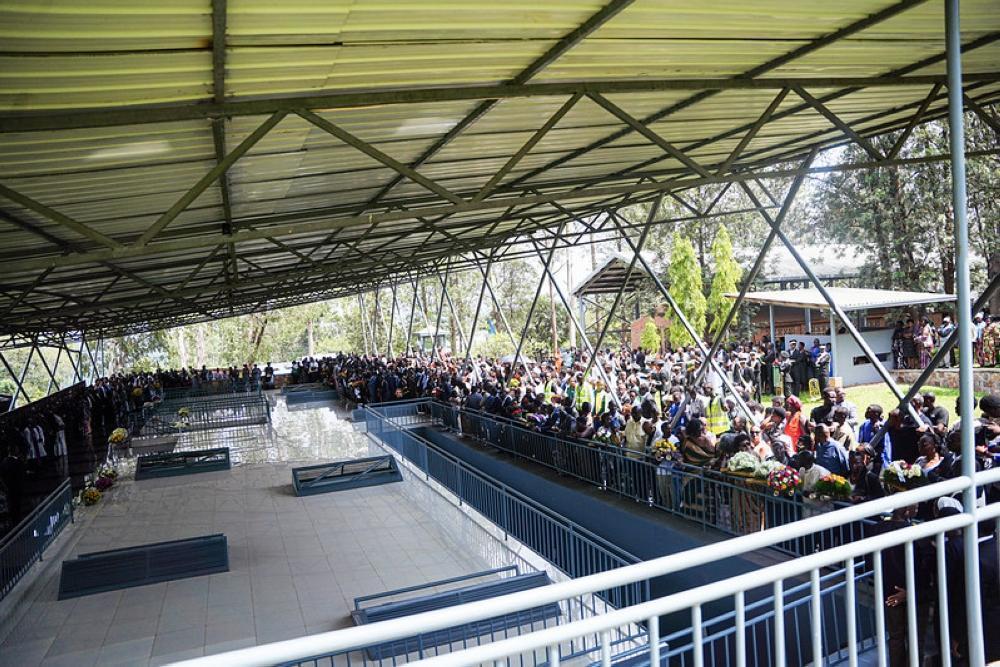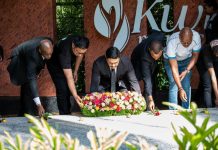Africa-Press – Rwanda. The Minister of National Unity and Civic Engagement, Jean Damascene Bizimana, has said that hatred is the only reason why some perpetrators of the 1994 Genocide against the Tutsi continue to withhold information about the whereabouts of victims’ remains.
The minister said this on Saturday, June 14, during a commemoration event held at Ntarama Genocide Memorial in Bugesera District, where 320 recently exhumed were given a decent burial. These remains were unearthed during the installation of water pipelines near the district office in an area that had a roadblock during the Genocide.
According to Ibuka, the umbrella organization for Genocide survivors’ association, the remains included schoolchildren, as evidenced by uniforms found at the site.
In his remarks, Minister Bizimana encouraged Genocide survivors not to be weighed down by the inhumanity of perpetrators who have, for more than three decades, refused to reveal the locations of the victims’ bodies, only for them to be found by chance during development works.
“For the perpetrators to refuse to disclose where they threw the bodies during the mass killings, and for them to only be discovered 31 years later, there can be no rational explanation apart from the deep-seated hatred entrenched within them, hatred rooted in a genocidal ideology that defies human comprehension,” Bizimana said.
He continued, “This is evidenced by what transpired during the Genocide itself, some perpetrators, driven by hatred and cruelty, began by murdering their own mothers and wives, in a twisted demonstration that no Tutsi should be spared, regardless of relationship or humanity.”
He emphasized that this hatred, systematically instilled by the genocidal regime, does not simply vanish from those who fed on it for decades.
Bizimana described the cruelty with which the Tutsi were killed, saying this reflected the systematic way the Genocide was prepared before it claimed more than one million lives in 100 days.
“Even the roadblocks were labeled with cruel names to mark them as zones of death for the Tutsi,” Bizimana explained. “One such example is Singira imbabazi, roughly translated as ‘I have no mercy,’ which was near the Anglican Church in Ruhanga, Gasabo District. The naming was deliberate, meant to signal to every Tutsi who approached that they would not make it past that point,”
Another roadblock was called Intebe y’urupfu, meaning ‘chair of death,’ and it was in Kilinda near EPR Church. Every Tutsi who came near that place was made to pray before being killed, Bizimana said, adding that it marked the boundary between life and death.
He offered words of comfort to Genocide survivors, affirming the government’s commitment to preserving the dignity of the victims.
“As their bodies are discovered, we shall always honour them, accord them the respect they deserve, and lay them to rest with dignity,” he said.
‘Stop begging perpetrators to speak’
Minister Bizimana urged survivors to reclaim their strength and stop appealing to perpetrators to reveal the locations of victims’ remains.
“Begging them to reveal burial sites only empowers them. They take pleasure in your grief and sense of loss. Do not give them that satisfaction,” he said.
“Let those who are willing to speak do so. But do not be broken. You must stay focused and hopeful for the future. Every time we discover remains, we will honour them appropriately.”
The hundreds of Genocide victims interred at Ntarama Genocide Memorial on Saturday join another 5,000 laid to rest at the former Catholic church. Over 3,000 of them were killed inside the church, where they had sought refuge.
Minister Bizimana also addressed the role of religious institutions in the genocide, highlighting the complicity of some clergy members. He recounted how, at Ntarama, babies were killed by being smashed against the church walls, betrayed in a place meant to provide sanctuary.
He also criticized both local and foreign church leaders who contributed to Genocide denial through written statements and propaganda.
“In October 1990, at the onset of the liberation struggle, 110 foreign Catholic priests, along with other clergy, authored a collective statement demonizing the Tutsi, the RPF-Inkotanyi, and glorifying the regime of President Juvenal Habyarimana,” he said.
“They alleged that the Tutsi were inherently violent and posed a threat to a so-called holy government, denying the refugee crisis and fueling genocidal sentiments. Such narratives still linger today, with some of those responsible continuing to serve as clergy, untouched by justice.”
Ange Uwanyirigira, 42, a mother of three who survived the genocide in the church, was one of those who identified their relatives among the newly discovered remains.
“I found my elder sister Josiane Uwase. She was likely killed with other relatives and neighbours. Finding her and laying her to rest finally brings a sense of closure,” she said.
“Living without knowing where your loved ones are keeps the hope, however false, that they might be alive. But giving them a proper burial brings peace, even the hope to coexist with perpetrators.”
Blaise Ndizihiwe, Second Vice President of Ibuka, echoed the importance of voluntary disclosure by those with information about mass graves.
“We should not wait for infrastructure projects to uncover the remains. Survivors and the broader community must step forward,” he said. “To the survivors, you are not alone in this history. Your grief is ours. You are the living testimony of this nation’s resilience and unity.”

For More News And Analysis About Rwanda Follow Africa-Press

